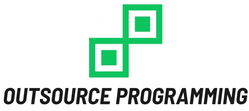Outsourcing software projects can be a game-changer for businesses looking to boost efficiency and cut costs. However, diving into the world of outsourcing without a solid risk management strategy is like sailing into uncharted waters without a compass. In this blog post, we will explore how you can safeguard your outsourced software projects through effective risk management practices. So grab your virtual life vest and let’s navigate the choppy seas of software outsourcing together!
Understanding Risks in Outsourcing
Outsourcing software projects can be a strategic move for businesses looking to maximize efficiency and reduce costs. However, it also comes with its own set of risks that need to be carefully understood and managed.
One of the key risks in outsourcing is the potential loss of control over project timelines and quality. When working with external vendors, there may be challenges in communication, leading to misunderstandings or delays in deliverables.
Another risk to consider is data security. Sharing sensitive information with third-party providers opens up the possibility of leaks or breaches, which could have serious consequences for your business reputation and compliance with regulations.
Cultural differences and time zone variations can impact collaboration and productivity between teams located in different regions. It’s essential to address these challenges upfront to ensure smooth project execution.
By gaining a thorough understanding of these risks, businesses can proactively implement strategies to mitigate them effectively throughout the outsourcing process.
Benefits of Risk Management in Software Outsourcing
When it comes to software outsourcing, implementing a robust risk management strategy can bring a myriad of benefits to your project. By proactively identifying and addressing potential risks, you can safeguard your investment and ensure the successful delivery of your software solution.
One key benefit of risk management in software outsourcing is enhanced decision-making. By having a clear understanding of the risks involved, stakeholders can make informed choices that mitigate potential negative impacts on the project timeline and budget.
Effective risk management fosters transparency and communication among all parties involved in the outsourcing process. This open dialogue helps build trust and collaboration, leading to better outcomes for everyone involved.
By addressing risks early on, you can prevent costly delays and rework down the line. This proactive approach not only saves time and money but also enhances overall project efficiency and quality.
Incorporating risk management practices into your software outsourcing endeavors can result in smoother project execution, improved stakeholder satisfaction, and ultimately greater success in achieving your business goals.
Key Elements of a Risk Management Strategy
When it comes to outsourcing software projects, having a robust risk management strategy in place is crucial. To effectively manage risks, there are key elements that should be incorporated into your approach.
Conducting a thorough risk assessment is essential. This involves identifying potential risks that could impact the project and assessing their likelihood and potential impact. By understanding these risks upfront, you can develop strategies to mitigate them.
Clear communication and collaboration between all stakeholders is vital. Ensuring that everyone is on the same page regarding identified risks and mitigation plans helps to minimize misunderstandings and ensure alignment towards common goals.
Defining roles and responsibilities related to risk management within your team is important. Assigning specific tasks to individuals who will be responsible for monitoring and addressing risks can help streamline the process.
Regularly reviewing and updating your risk management strategy as the project progresses is key. As new risks emerge or circumstances change, it’s important to adapt your approach accordingly to stay ahead of potential challenges.
By incorporating these key elements into your risk management strategy, you can enhance the success of your outsourced software projects while minimizing potential setbacks.
Best Practices for Identifying and Mitigating Risks
When it comes to outsourcing software projects, identifying and mitigating risks is crucial for a successful partnership. One best practice is to thoroughly vet potential vendors before selecting one. Look into their track record, client reviews, and overall reputation in the industry.
Another important step is to clearly define project scope, requirements, and deadlines upfront. This helps set expectations on both sides and reduces the chances of misunderstandings down the line. Regular communication with your outsourced team is key in staying informed about any potential risks or roadblocks that may arise during the project.
Having a contingency plan in place can help mitigate unexpected issues that may surface during the development process. By anticipating possible risks and having strategies in place to address them, you can ensure smoother project execution from start to finish.
The Importance of Proactive Risk Management in Software Outsourcing
By implementing a proactive risk management strategy in software outsourcing projects, businesses can effectively mitigate potential risks and ensure successful project delivery. By understanding the risks involved, identifying key elements of a risk management strategy, and implementing best practices for risk identification and mitigation, companies can safeguard their outsourced software projects.
Remember, proactive risk management is not just about avoiding problems but also about seizing opportunities to improve project outcomes. It allows businesses to anticipate challenges, address them proactively, and ultimately increase the chances of project success. So, next time you embark on a software outsourcing venture, make sure to prioritize risk management from the start. Your future projects will thank you for it!


Leave A Comment Cancel reply